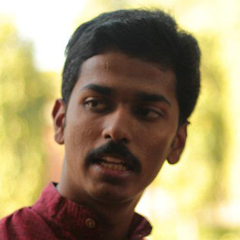Hamara Bajaj: the twist in the tilt, the jingle and more...

Mail This Article
Once, none of the scientists in NASA were able to figure out why their rocket won't lift-off from the launchpad. The scientists from all over the world tried every bit of engineering but nothing worked. This is when an Indian working at the facility offered an uncanny solution.
“Instead of keeping it straight, tilt the rocket by 30 degrees and launch,” he said. To everyone's surprise it worked.
All the bewildered scientists wanted to know how the Indian figured it out.
He said, “This is how we start our Bajaj scooters in India.”
The story is fictional, of course. But this and several other such jokes show how much the Bajaj Chetak and other such 'products of yore' were once integral to India's culture and will remain objects of nostalgia forever.
Now, as Bajaj announces plans to bring back its famed Chetak again, there is a stirring of curiosity and nostalgia in Indians of the Chetak age. All we know at this point is that the new Chetak might have a 125 cc engine. We do not know how much of the 'old horse' the new one will resemble.
Warrior's horse
The Chetak, named after the famous horse of Maharana Pratap, was truly a workhorse that made its rider feel the pride of a king while battling the struggles of daily life.
Though Chetak lost its market value with the entry of the gearless morph Kinetic Honda, it did not lose its place in the hearts of the masses.
Kinetic Honda itself became a piece of nostalgia when the scooter market was taken over by the more recent Honda Activa.
But the Chetak and Activa cannot be compared as the former meant a lot more to the common man and his family than the other scooters. It was a symbol of pride and prosperity. Cars were still a luxury when Chetak reigned.
Punnara Bajaj
It struck the right chords, 'Buland Bharath ki Buland Dakdeer (An uplifted India's, uplifted future)' went one ad. The ads showed that the owner of a Chetak is no ordinary man on the street. He is upright, honest and represented the 'essential Indianness.'
The 'Hamara Bajaj,' came to be known as 'Punnara Bajaj' for Keralites who held it as close to their hearts as the rest of India. It might come as a surprise to many that government employees had a 'Chetak quota' to buy scooters. It was less of a scooter and more of a family member.
Modelled after the vespa, one had to pay a costly premium of Rs 500 to book the vehicle and wait for six to seven years for a delivery. During the 80s, a Bajaj Chetak would cost around Rs 15,000. At a time when the vehicle loan concept of today was non-existent, it was a huge amount.
For the loyal customers, the cumbersome process of booking and the long wait for delivery did not matter. In its heydays, Bajaj sold over 10 lakh units of the Chetak a year.
One anecdote on a blog mentions that people would make two bookings from different addresses in remote cities and when it's time for delivery, they would sell one allotment and use the money to buy the other one.
Gender neutral
The Chetak didn't discriminate whether it was Maharana or Jhansi ki Rani riding on it. The sturdy beast would do its work of carrying you and your family. It was a gender neutral scooter used by one and all to complete their daily chores. A dream companion.
As the Hot Wheels and Barbie started separate toys for boys and girls in India, the new age scooters too started being projected as the light weight automatic one for women and the heavy bikes for men.

The Chetak gradually lost its sheen when the once youthful love could not catch up with the aspirations of the India that craved for new toys.
Nostalgia
Technology and a global growing economy is changing the world around us so fast that such objects of nostalgia take us back to the old days. From a phone which you had to literally dial a number to the smartphones of today, we have come a long way. We may own a Suzuki Multistrada or Honda Grazia, but the Chetak is still what the adults of today grew up with and will connect with as 'Hamara' or 'Punnara.'


